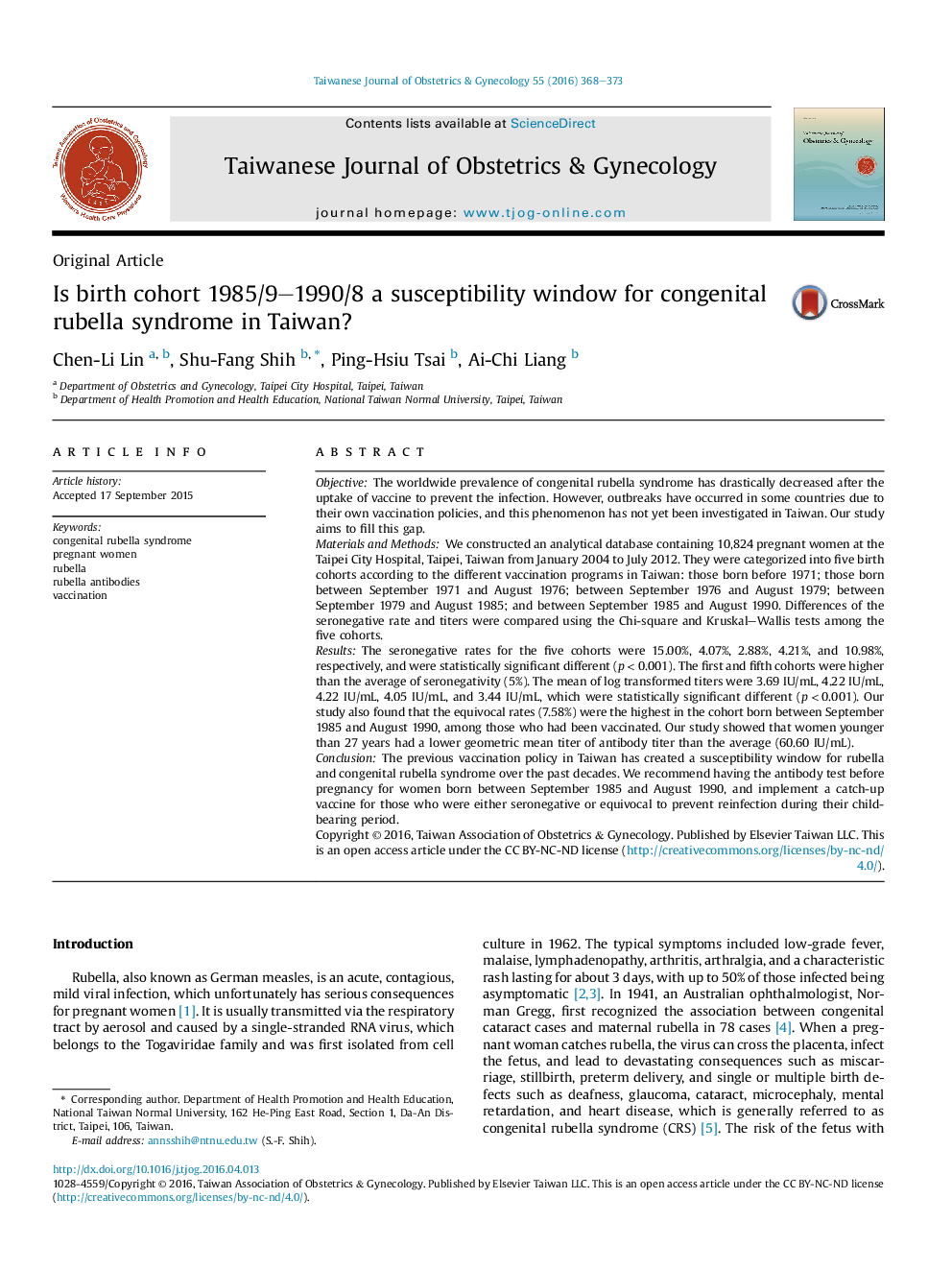| Article ID | Journal | Published Year | Pages | File Type |
|---|---|---|---|---|
| 3975162 | Taiwanese Journal of Obstetrics and Gynecology | 2016 | 6 Pages |
ObjectiveThe worldwide prevalence of congenital rubella syndrome has drastically decreased after the uptake of vaccine to prevent the infection. However, outbreaks have occurred in some countries due to their own vaccination policies, and this phenomenon has not yet been investigated in Taiwan. Our study aims to fill this gap.Materials and MethodsWe constructed an analytical database containing 10,824 pregnant women at the Taipei City Hospital, Taipei, Taiwan from January 2004 to July 2012. They were categorized into five birth cohorts according to the different vaccination programs in Taiwan: those born before 1971; those born between September 1971 and August 1976; between September 1976 and August 1979; between September 1979 and August 1985; and between September 1985 and August 1990. Differences of the seronegative rate and titers were compared using the Chi-square and Kruskal–Wallis tests among the five cohorts.ResultsThe seronegative rates for the five cohorts were 15.00%, 4.07%, 2.88%, 4.21%, and 10.98%, respectively, and were statistically significant different (p < 0.001). The first and fifth cohorts were higher than the average of seronegativity (5%). The mean of log transformed titers were 3.69 IU/mL, 4.22 IU/mL, 4.22 IU/mL, 4.05 IU/mL, and 3.44 IU/mL, which were statistically significant different (p < 0.001). Our study also found that the equivocal rates (7.58%) were the highest in the cohort born between September 1985 and August 1990, among those who had been vaccinated. Our study showed that women younger than 27 years had a lower geometric mean titer of antibody titer than the average (60.60 IU/mL).ConclusionThe previous vaccination policy in Taiwan has created a susceptibility window for rubella and congenital rubella syndrome over the past decades. We recommend having the antibody test before pregnancy for women born between September 1985 and August 1990, and implement a catch-up vaccine for those who were either seronegative or equivocal to prevent reinfection during their childbearing period.
